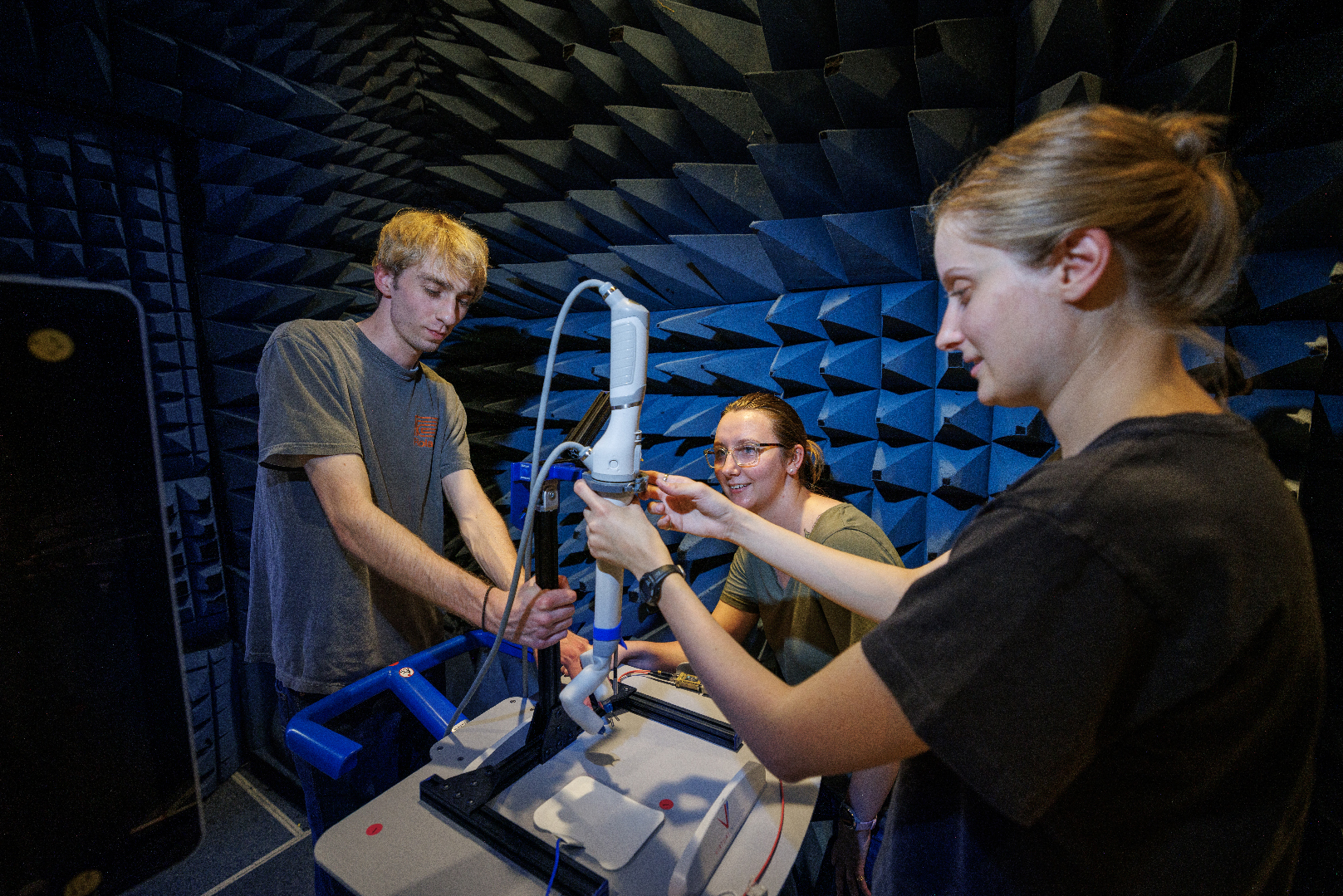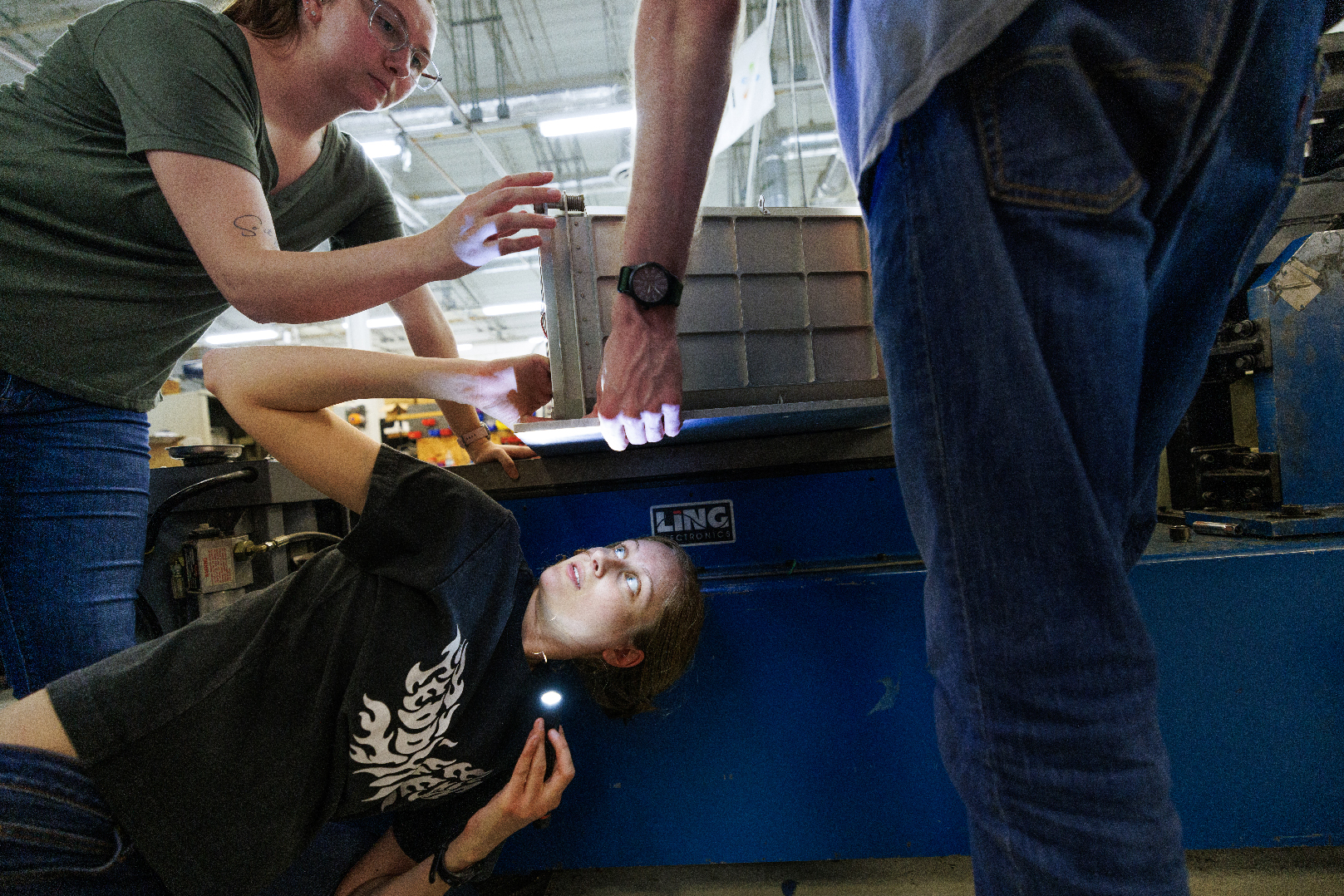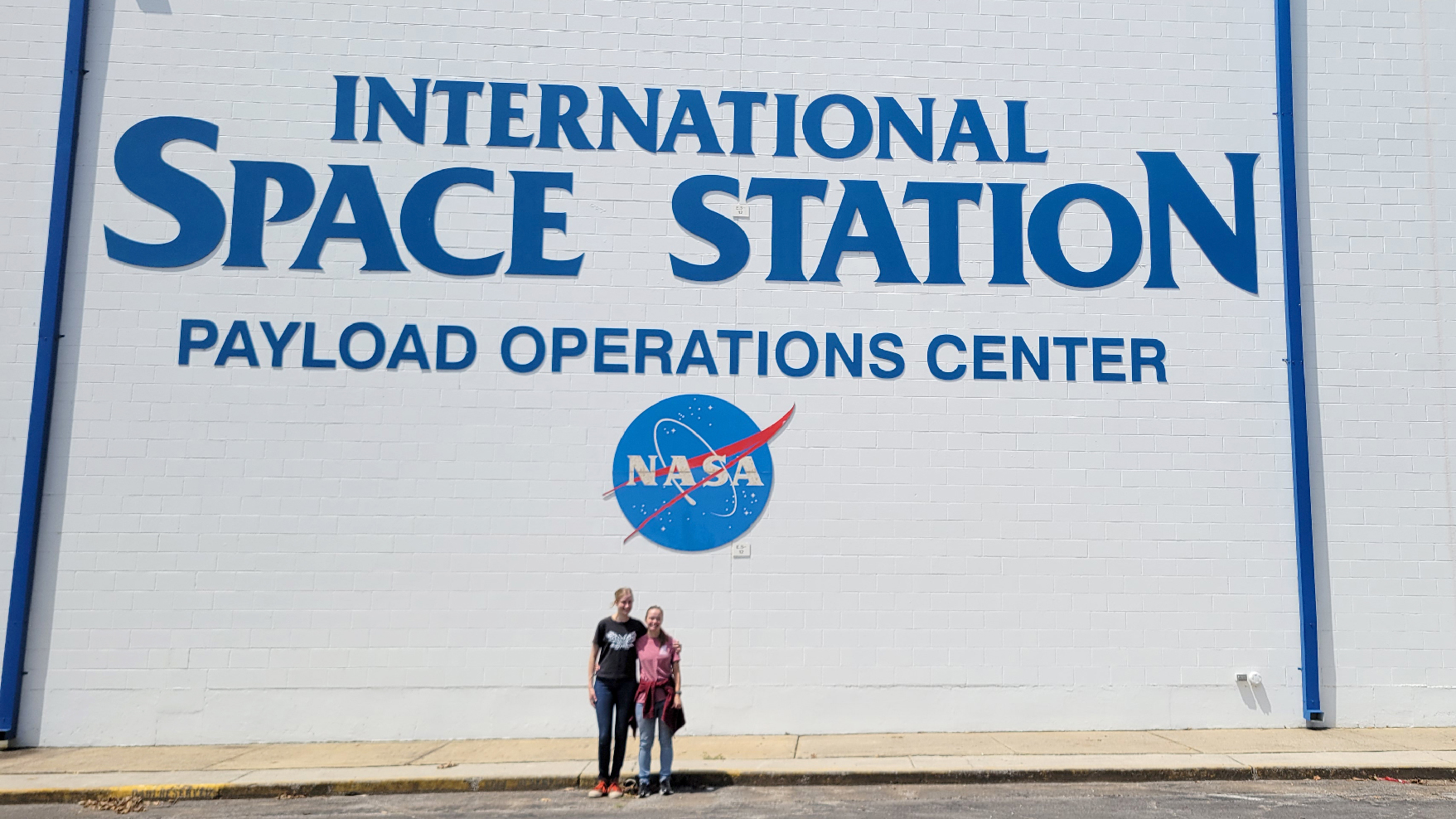
A small team of students, led by doctoral student Rachael Wagner of Lincoln, was instrumental in prepping a miniaturized surgical robot for its first spaceflight.
MIRA, short for “miniaturized in vivo robotic assistant,” is under development by Virtual Incision, a startup company co-founded in 2006 by Shane Farritor, a Nebraska engineering professor.
The spacefaring version of the robot, called spaceMIRA, began its flight to the International Space Station aboard a Northrop Grumman Cygnus space freighter at 11:30 a.m. Jan. 29.
Wagner joined Farritor in Cape Canaveral, Florida, to see the launch of a SpaceX Falcon 9 rocket carrying the Cygnus and spaceMIRA.
The test of its operability aboard the International Space Station is a joint project between Virtual Incision and Farritor’s robotics laboratory on the University of Nebraska–Lincoln campus.
“Student researchers, both graduate and undergraduate, have been indispensable in preparing spaceMIRA for its trip aboard the International Space Station,” Farritor said. “One of the joys of this work is offering opportunities to young engineers.
“As an inventor, I rely on the students’ creativity and their hard work. As an educator, I’m thrilled to see their skills improve and their dreams take shape. Like we say at Nebraska, ‘every person and every interaction matters.’”
Wagner began working with Farritor as an undergraduate student and took a position with Virtual Incision after completing her bachelor’s degree in mechanical engineering in 2018.
With Farritor’s guidance, Wagner wrote the proposal seeking NASA funding to send MIRA to space. For her master’s thesis, she developed the details for integrating the robot into NASA systems and preparing it for space flight. Her doctoral dissertation will focus on spaceMIRA’s performance aboard the space station.

“I’m so fortunate, I learned definitely so much,” Wagner said. “My world has gotten so much bigger. Working with NASA engineers and meeting with them every week is not something every student gets to do.”
About a dozen people worked on the project, many of them current or former Husker students.
Nelson, who graduated from Sioux City East High School in 2018, now is a master’s degree student studying robotics with another Husker robotics expert, Carl Nelson (no relation), a mechanical engineering professor. She was hired as an undergraduate in fall 2022 to work on spaceMIRA in Farritor’s robotics lab. She completed her bachelor’s degree in December 2022 and continues to work on the project as a volunteer.
She accompanied Wagner to Marshall Space Flight Center in Alabama in August for spaceMIRA’s pre-flight testing, where they worked with a NASA integration manager from Johnson Space Center in Houston.
“It’s much more than a student project,” Nelson said. “I’ve seen movies and stuff about working with NASA and I knew it would be complicated, but I never knew how complicated or how many things are involved with it.”
Sean Crimmins, an undergraduate student from Lincoln, worked on spaceMIRA full-time in summer 2023. His position with Virtual Incision was the latest in a series of research jobs the mechanical engineering major held at the university — starting as a 10th grader at Lincoln East High School. As an undergraduate student, he served as first author on a research article based on his work in the laboratory of Benjamin Terry, a former Husker mechanical engineering professor.
He has continued as a Virtual Incision employee since completing his bachelor’s degree in mechanical engineering in December 2023. Graduate school may be a future possibility, but for now Crimmins is relishing the work with Virtual Incision’s seasoned engineers.
“The way they think about things, you can tell they have 20 to 30 years’ experience,” Crimmins said. “You get be like a sponge around those guys — and you get to work on pretty cool things. There’s a lot of fun design work, which is not always a given in engineering jobs.”
The space station launch culminates several years’ work to adapt MIRA to microgravity, the violent shaking of a rocket launch and the spotty communications of space travel.

The team built two spaceMIRA units, a test version and a flight version. They shortened the robot by about 3 inches to fit comfortably in its microwave oven-sized experiment locker.
Team members were trained how to use NASA software that connects the researchers with payload ground control. They learned NASA code language for communications channels, and they participated in a day-long simulation where NASA teams practiced for anything and everything that might go wrong.
SpaceMIRA must meet astronaut safety requirements in areas such as electrical wiring, avoiding sharp edges and avoiding flammable materials. The team worked with NCEE Labs, a private lab in Lincoln, to make sure the robot didn’t emit invisible electromagnetic waves that could interfere with space station systems.
“We even needed to do acoustic testing,” Wagner said. “The machine should not be too loud. We don’t want to give an astronaut a migraine from buzzing background noise they can’t tune out.”
Wagner wrote 35 reports to NASA verifying that spaceMIRA met 109 different requirements imposed by the space agency.
Crimmins and Nelson assisted with hardware and testing, as did another student, Erika Smith from Pleasant Dale, Nebraska. Smith recently accepted an engineering position in Connecticult after she completed her bachelor’s degree in May.
A quirk of fate led to Crimmins’ interest in medical robotics. As a high schooler, he contemplated following in his father’s footsteps and becoming a cardiac anesthesiologist. To learn more about biology, he worked for Tala Awada, now associate dean for the Agricultural Research Division at Nebraska. After he spent a summer weighing plants and crunching numbers, Awada introduced him to Terry, who specializes in laparoscopic surgical devices and other medical devices.
“Through these jobs, I got an interest in engineering that changed my career path,” Crimmins said. “It started in biology and working with plants, but you get all these unlikely encounters that shape who you are. One thing led to another and, by trial and error, you figure out what you like and what you gravitate toward.”
Nelson fell in love with robotics as a middle school student in Sioux City. Legos were her favorite toy as a youngster and she started building robots as part of a Lego League team through the 4-H youth program. Her father later started a robotics team for her and other students at Sioux City East.
“I’ve always loved the creativity and innovation of robotics — it is a very futuristic and progressive area in engineering,” she said. “My experience with spaceMIRA has been amazing. It has improved my studies tenfold. I can prove I know how to use what I learn.”
Share
Tags
High Resolution Photos

HIGH RESOLUTION PHOTOS

HIGH RESOLUTION PHOTOS








